#paul getty museum
Explore tagged Tumblr posts
Text


Red-figure loutrophoros with front depicting mythological scenes and back depicting naiskos (grave monument) with young woman
Attributed to the Painter of Louvre MNB 1148
Greek (from Apulia), Classical Period, c. 330 B.C.
J. Paul Getty Museum
#Loutrophoroi were originally vases used for a bride's ritual bath#but they were also used in a funerary context for the unmarried deceased#loutrophoros#vase#vase painting#terracotta#Greek art#ancient art#Ancient Greece#Classical Period#Greek#Apulia#Apulian#Getty Museum#J. Paul Getty Museum
515 notes
·
View notes
Text

Still Life with Apples, Paul Cézanne, 1893-94
Oil on canvas 65.4 x 81.6 cm (25 ¾ x 32 ⅛ in.) J. Paul Getty Museum, Los Angeles, CA, USA
#art#painting#paul cezanne#modern art#impressionism#post impressionism#still life#oil#19th century art#19th century#1890s#getty museum#100 notes
160 notes
·
View notes
Text
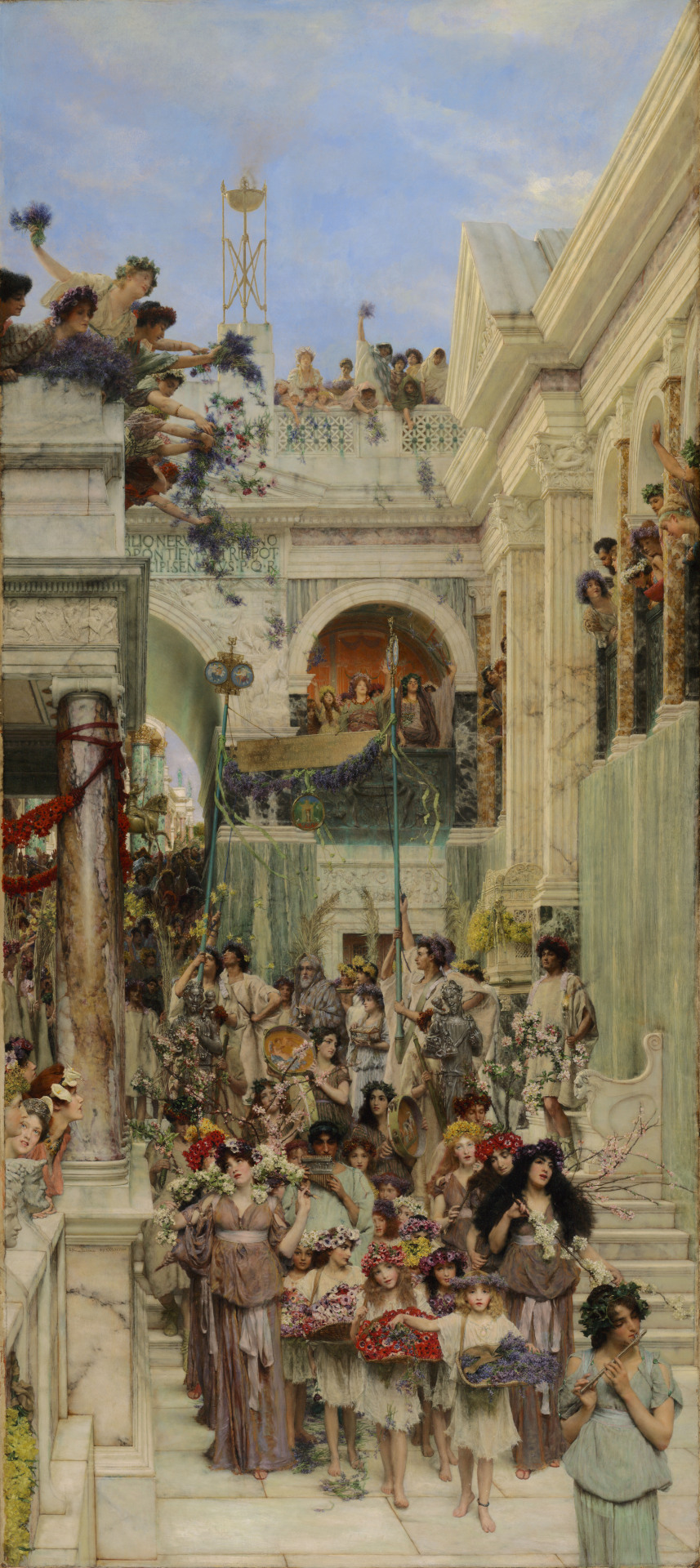
Spring, Sir Lawrence Alma-Tadema, 1894
#art#art history#Alma-Tadema#Lawrence Alma-Tadema#historical painting#ancient history#Ancient Rome#spring#springtime#Academicism#Academic art#British art#English art#Anglo-Dutch art#Victorian period#Victorian art#19th century art#oil on canvas#Getty Museum#J. Paul Getty Museum
2K notes
·
View notes
Text

The Panagyurishte Gold Treasure to Be Displayed at J. Paul Getty Museum in Los Angeles
The Panagyurishte Gold Treasure and exhibits from the Bashova and Mushovitsa mounds will be put on display at the J. Paul Getty Museum in Los Angeles, USA, as part of an exhibition dedicated to the region of Ancient Thrace. The Ancient Thrace and the Ancient World. Treasures from Bulgaria, Romania and Greece exhibition features more than 150 exhibits of fourteen Bulgarian museums and will be on display between November 3, 2024, and March 3, 2025.
Archaeologist Lyubomir Merdzhanov of the Regional Archaeological Museum in Plovdiv told BTA that his museum will participate in the exhibition with three treasures, one of which is Bulgaria’s emblematic Panagyurishte Gold Treasure. It is one of the so-called deposited treasures, which does not consist of tomb artifacts but was hidden for some reason, he explained. The other exhibits are objects from two mounds (Bashova and Mushovitsa) from the iconic necropolis near the village of Duvanlii in the Kaloyanovo Municipality.










#Panagyurishte Gold Treasure#The Panagyurishte Gold Treasure to Be Displayed at J. Paul Getty Museum in Los Angeles#treasure#gold#gold treasure#gold artifacts#ancient artifacts#archeology#archeolgst#history#history news#ancient history#ancient culture#ancient civilizations#art#ancient art#art history
130 notes
·
View notes
Text

Head with Horns, before 1894
Unknown artist/maker, Previous Attribution: Paul Gauguin
Sandalwood with traces of polychromy on a lacewood base
8 11/16 × 9 × 4 3/4 in.
This sculpture was photographed and labeled "Marquesan Idole" by Jules Agostini (French, 1859-1930) in November 1894, in the Marquesas Islands, in Nuku Hiva (Paris, musée du Quai Branly-Jacques Chirac, Agostini's photo albums). Sent to work for the French State in Oceania, Agostini stopped in the Marquesas Islands in late November 1894 just before arriving in Tahiti, where he stayed until 1898.
#horns#fine art#art#artwork#artists on tumblr#artist#marquesas#tahiti#oceania#wood sculpture#paul gauguin#carved wood#sculpture#antique art#antiques#getty museum#horned god#demon horns#devil horns#artists#art history#art on tumblr#art of the day#halloween#mask#masks
83 notes
·
View notes
Text

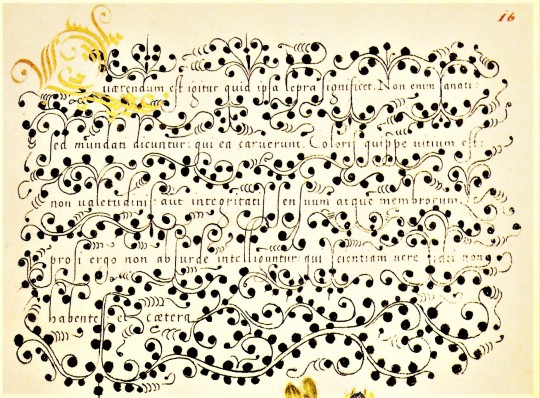

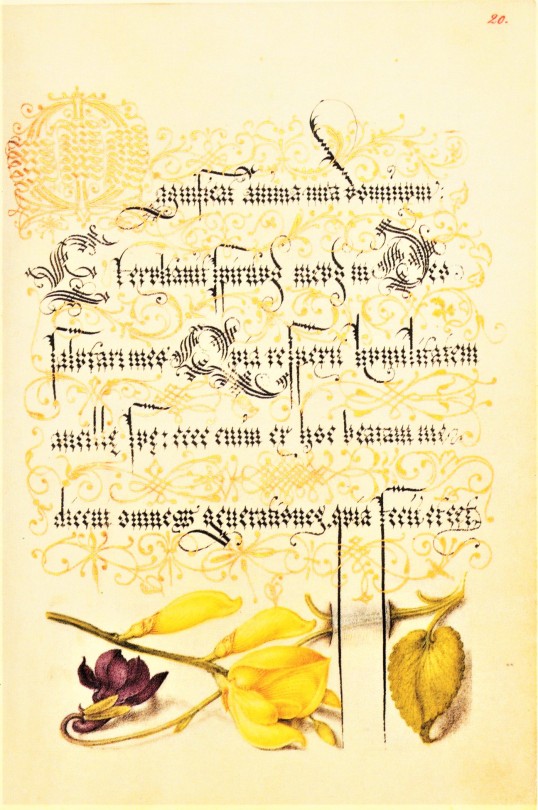


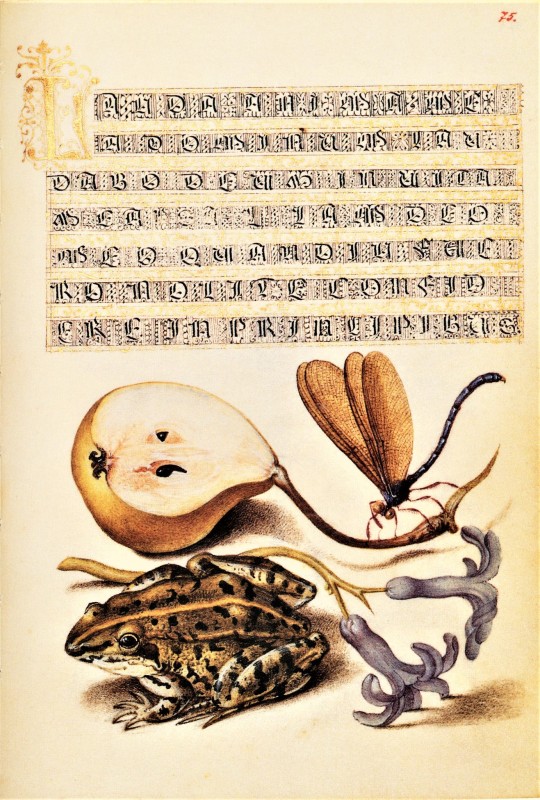



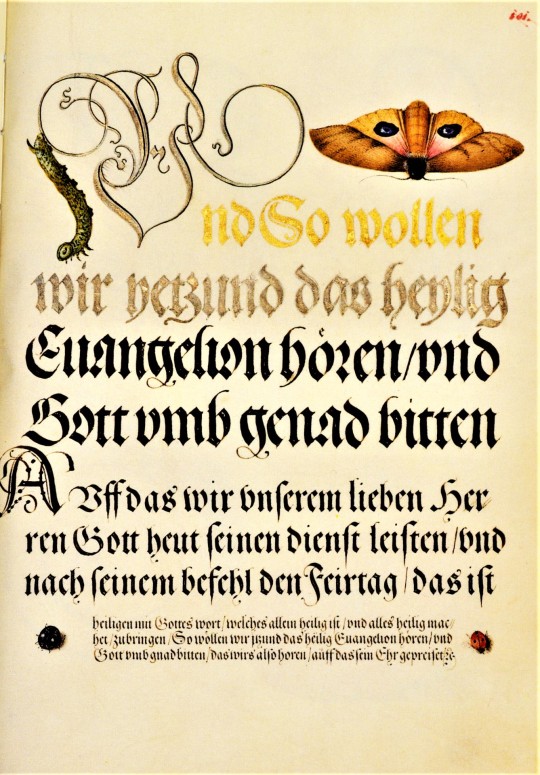

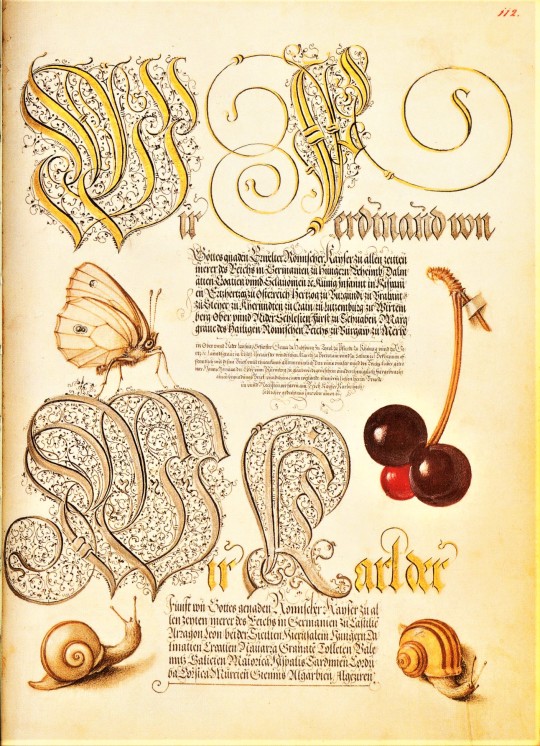
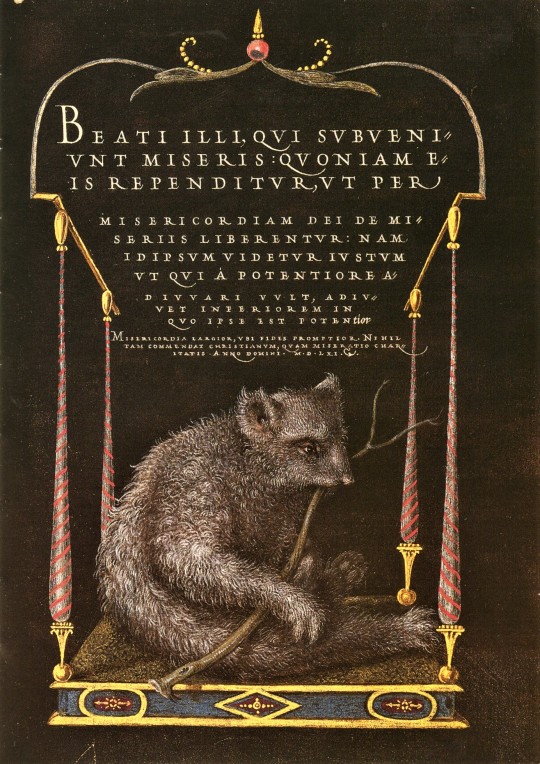
Typography Tuesday
We return to our facsimile of a 16th-cnetury calligraphic manuscript, Mira Calligraphiae Monumenta, or Model Book of Calligraphy, written in 1561/62 by Georg Bocskay, the Croatian-born court secretary to the Holy Roman Emperor Ferdinand I, and illuminated 30 years later by Flemish painter Joris Hoefnagel for the grandson of Ferdinand I, Emperor Rudolph II. The manuscript was produced by Bocskay in Vienna to demonstrate his technical mastery of the immense range of writing styles known to him. To complement and augment Bocskay's calligraphy, Hoefnagel added fruit, flowers, and insects to nearly every page, composing them so as to enhance the unity and balance of the page’s design. Although the two never met, the manuscript has an uncanny quality of collaboration about it.
Our facsimile was the first facsimile produced from the collection at the J. Paul Getty Museum in Los Angeles. It was printed in Lausanne, Switzerland by Imprimeries Reunies and published by Christopher Hudson in 1992.
View another post from Mira Calligraphiae Monumenta,
View more Typography Tuesday posts.
#Typography Tuesday#typetuesday#Mira Calligraphiae Monumenta#or Model Book of Calligraphy#Georg Bocskay#Joris Hoefnagel#illuminated manuscripts#manuscripts#manuscript facsimiles#facsimiles#calligraphy#letter forms#letters#J. Paul Getty Museum#Imprimeries Reunies#Christopher Hudson#Ferdinand I#Rudolph II
861 notes
·
View notes
Text

Irises (1889) by Vincent van Gogh (Dutch, 1853–1890), oil on canvas, 74.3 × 94.3 cm, The J. Paul Getty Museum, Los Angeles
#irises#vincent van gogh#painting#my upload#oil on canvas#j. paul getty museum#the getty#getty center#los angeles#19th century#post impressionism#still life#floral painting
52 notes
·
View notes
Text

Franco Rubartelli, Veruschka with head surrounded by circles of braided gold hair, Vogue April 1967 VS Mosaic floor with head of medusa, 115–150 (now at The J. Paul Getty Museum)
#franco rubartelli#vogue#veruschka#hair#braided hair#mosaic#ancient rome#rome#archaeology#J. Paul Getty Museum#getty museum#california#los angeles
43 notes
·
View notes
Photo

Jan van Huysum (Dutch, 1682 - 1749), “Bouquet of Flowers in a Terracotta Vase” (detail), 1722, oil on panel, The J. Paul Getty Museum
#jan van huysum#bouquet of flowers in a terracotta vase#detail#1722#oil on panel#oil painting#painting#art#dutch artist#the j. paul getty museum#flowers#bouquet#terracotta vase#terracotta
21 notes
·
View notes
Text

Peter Henry Emerson | J. Paul Getty Museum
35 notes
·
View notes
Text

Waiting (1882) 🎨 Edgar Degas 🏛️ The J. Paul Getty Museum 📍 Los Angeles, United States
A young ballet dancer bends forward to massage her foot, while her somberly dressed older companion sits silently beside her on a bench. They appear to be waiting, perhaps for an audition or its outcome. The two figures are a study in contrasts: The athletic dancer dressed in a dazzling costume reflects the glamour and artifice of the stage, while the shabbily dressed, bent figure represents the drabness of everyday life.
Edgar Degas painted modern life; his subjects, including laundresses, milliners, nightclub singers, horse races, and the ballet, reflected contemporary Parisian occupations and diversions. From the 1860s onward, Degas frequented the Paris Opéra, where he made numerous studies of performances, rehearsals, and backstage scenes. Later, he would refine and combine these motifs in his studio, in exercises of daring technical skill and compelling psychological subtlety. Here he demonstrated his complete mastery of the pastel technique. Delicately blended strokes are combined with bold hatching and emphatic slashes; pink, blue, and creamy tones describe the dancer in contrast to the dark, severe form of the older woman.
#Waiting#L'attente#Edgar Degas#pastel#pastel on paper#1882#Impressionism#Modern art#ballet#The J. Paul Getty Museum#Los Angeles#United States#french#art#artwork#art history
22 notes
·
View notes
Text

Gold ring inset with carnelian intaglio representing Tyche
Hellenistic Period, possibly from Ptolemaic Egypt, 225-175 B.C.
J. Paul Getty Museum
#ancient art#ancient jewelry#Tyche#Fortuna#Hellenistic Egypt#cornucopia#Hellenistic Period#Greek#J. Paul Getty Museum#Getty Museum#gold#ring#intaglio#carnelian
383 notes
·
View notes
Text
Can’t get over this 1986 description of a vase in the J. Paul Getty Museum:
‘A bearded reveller with broad dotted fillet and wreath, naked but for a mantle slung over his left shoulder and his left and upper right arms, appears in his great excitement almost unaware of his boy-servants rescue operation. The small procession, on its way to the right, has come to a stop, and the boy must have turned around to answer his master’s call for a substitute receptacle: “ἀμίδα παῖ”. The reveller’s grand gesture, half-open mouth, and inspired upward gaze seem to reflect his devotion to the god whose gift he must have sampled to a great extent, as well as to express his pathetic urgency. Yet, because of his aroused state, nature’s call is forced to wait. The boy’s attitude, however, is calm and matter of fact. While shouldering his master’s knotty stick, together with the strings of a picnic basket, neatly covered by a fringed embroidery napkin, he proffers the large jug and steadies it to wait things out.’

Sir. Just say it’s a vase of a drunk man trying to piss in a jug a kid is holding for him.
#tagamemnon#Greek vases#the description is from Vol 3 of ‘Greek vases in the J. Paul Getty Museum’ (1986)#p. 92 chapter by Elfriede R. Knauer#also can’t get over the completely anachronistic description of a picnic basket covered by an embroidered napkin.
111 notes
·
View notes
Text

A Roman Feast, Roberto Bompiani (1821-1908)
#art#art history#Roberto Bompiani#historical painting#ancient history#Ancient Rome#Roman Empire#genre painting#Italian art#19th century art#oil on canvas#Getty Center#Getty Museum#J. Paul Getty Museum
271 notes
·
View notes
Text
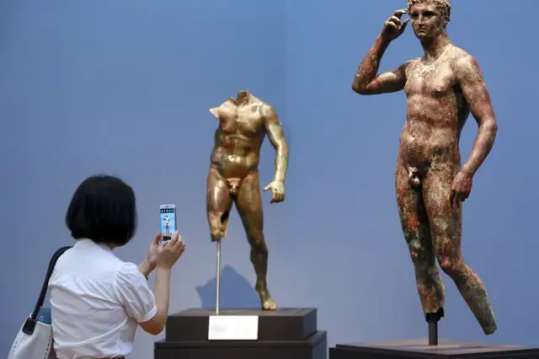
European Court Upholds Italy's Right to Seize Greek Bronze from Getty Museum
A European court on Thursday upheld Italy’s right to seize a prized Greek statue from the J. Paul Getty Museum in California, ruling that Italy was justified in trying to reclaim an important part of its cultural heritage and rejecting the museum’s appeal.
The European Court of Human Rights, or ECHR, determined that Italy’s decades-long efforts to recover the “Victorious Youth” statue from the Malibu-based Getty were not disproportionate.
“Victorious Youth,” a life-sized bronze dating from 300 B.C. to 100 B.C., is one of the highlights of the Getty’s collection. Though the artist is unknown, some scholars believe it was made by Lysippos, Alexander the Great’s personal sculptor.
The bronze, which was pulled from the sea in 1964 by Italian fishermen and then exported out of Italy illegally, was purchased by the Getty in 1977 for $4 million and has been on display there ever since.
The Getty had appealed to the European court after Italy’s high Court of Cassation in 2018 upheld a lower court’s confiscation order. The Getty had argued that its rights to the statue, under a European human rights protocol on protection of property, had been violated by Italy’s campaign to get it back.
The court ruled Thursday that no such violation had occurred.
“This is not just a victory for the Italian government. It’s a victory for culture,” said Maurizio Fiorilli, who as an Italian government attorney had spearheaded Italy’s efforts to recover its looted antiquities and, in particular, the Getty bronze.
The Getty has long defended its right to the statue, saying Italy had no legal claim to it.
Among other things, the Getty had argued that the statue is of Greek origin, was found in international waters and was never part of Italy’s cultural heritage. It cited a 1968 Court of Cassation ruling that found no evidence that the statue belonged to Italy.
Italy argued the statue was indeed part of its own cultural heritage, that it was brought to shore by Italians aboard an Italian-flagged ship and was exported illegally, without any customs declarations or payments.
After years of further legal wrangling, an Italian court in Pesaro in 2010 ordered the statue seized and returned, at the height of Italy’s campaign to recover antiquities looted from its territory and sold to museums and private collectors around the globe.
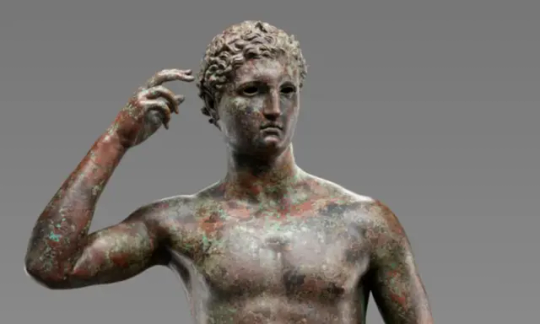
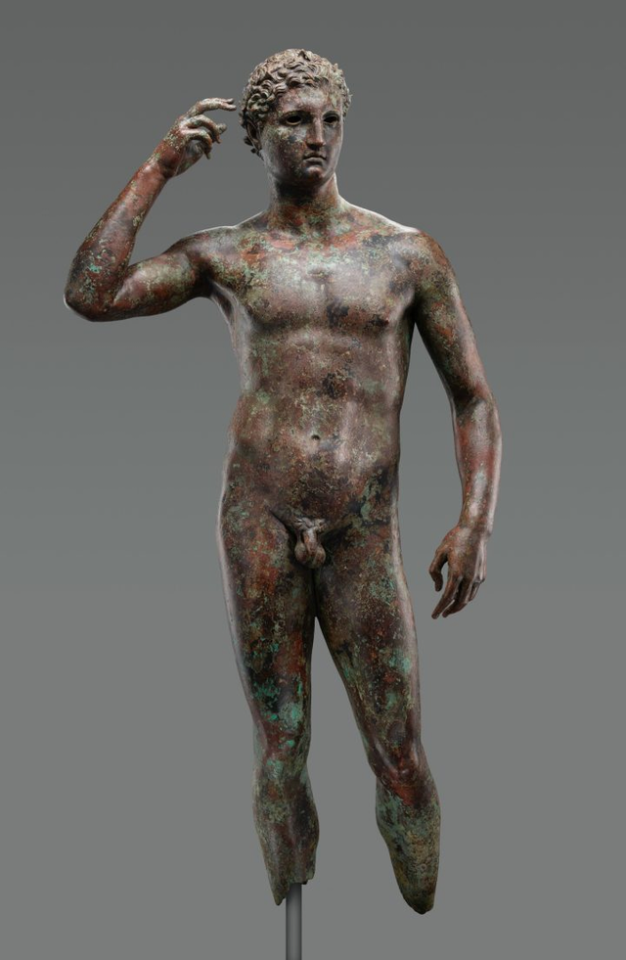
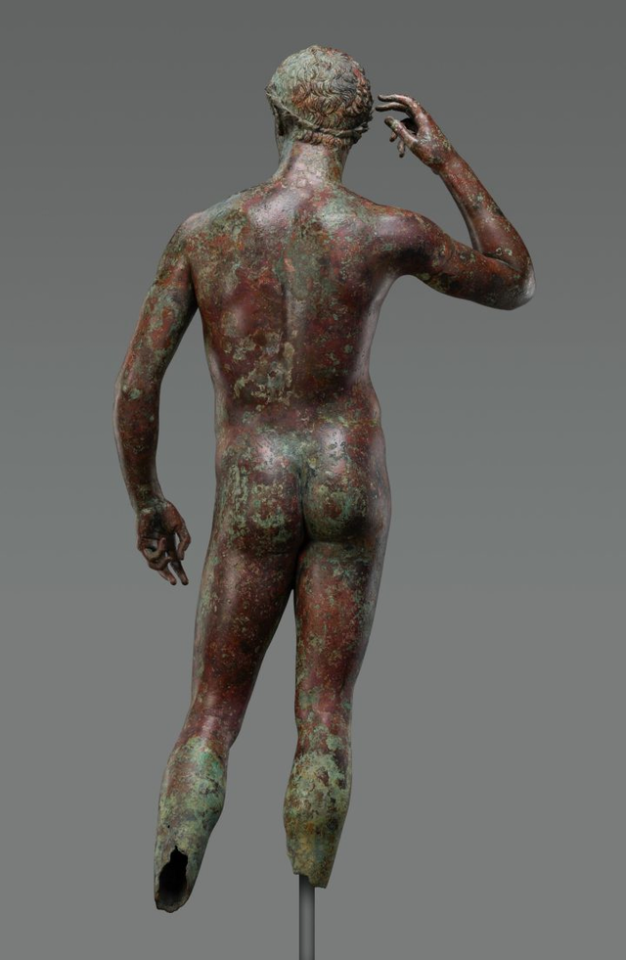
Thursday’s ruling by the Strasbourg, France-based ECHR was a chamber judgment. Both sides now have three months to ask that the case be heard by the court’s Grand Chamber for a final decision. But Thursday’s ruling was unanimous, with no dissenting judges, and the Grand Chamber can refuse to hear the case.
There was no immediate comment from the Getty, and its lawyers referred comment to the museum.
Italian Culture Minister Gennaro Sangiuliano praised Thursday’s decision as an “unequivocal ruling” that recognized the rights of the Italian state and its ownership of the statue.
“Following today’s ruling … the Italian government will restart contacts with U.S. authorities for assistance in the implementation of the confiscation order,” he said.
In a statement, he doubled down on Italy’s campaign to bring its looted treasures home, and noted that recently Italy has ceased cooperation with foreign museums that don’t recognize Italian legal confiscation orders.
Recently, Italy banned any loans to the Minneapolis Institute of Art following a dispute over an ancient marble statue believed to have been looted from Italy almost a half-century ago.
The Getty had appealed to the ECHR by arguing, among other things, that Italy’s 2010 confiscation order constituted a violation of its right to enjoy its possessions and that it would be deprived of that right if U.S. authorities carried out the seizure.
The ECHR however strongly reaffirmed Italy’s right to pursue the protection of its cultural heritage, especially from unlawful exportation.
“The court further held that owing, in particular, to the Getty Trust’s negligence or bad faith in purchasing the statue despite being aware of the claims of the Italian state and their efforts to recover it, the confiscation order had been proportionate to the aim of ensuring the return of an object that was part of Italy’s cultural heritage,” said the summary of the ruling.
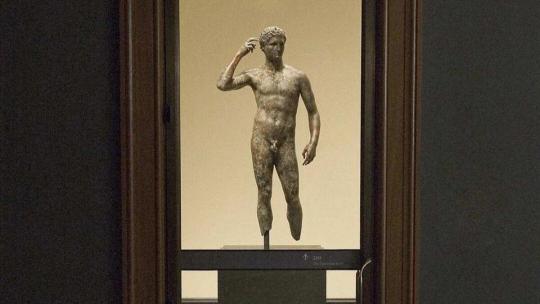
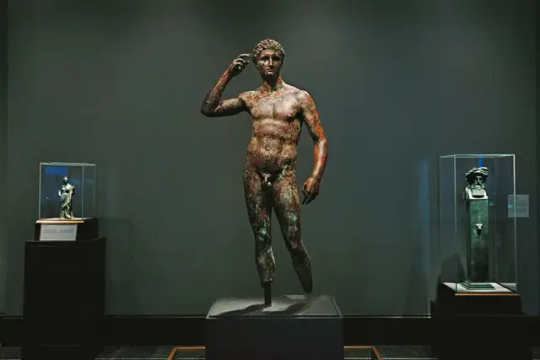
It wasn’t immediately clear what would happen next, though Fiorilli said the Getty had exhausted legal remedies and it’s now for U.S. the courts to enforce the Italian confiscation order.
“It’s not about guaranteeing the right to property, it’s about guaranteeing the internationally recognized value of every nation’s right to protect its cultural patrimony,” Fiorilli told The Associated Press over the telephone.
The statue, nicknamed the “Getty Bronze,” is a signature piece for the museum. Standing about 5 feet (1.52 meters) tall, the statue of the young athlete raising his right hand to an olive wreath crown around his head is one of the few life-sized Greek bronzes to have survived.
The bronze is believed to have sunk with the ship that was carrying it to Italy after the Romans conquered Greece. After being found in the nets of Italian fishermen trawling in international waters in 1964, it was allegedly buried in an Italian cabbage patch and hidden in a priest’s bathtub before it was taken out of the country.
Italy has successfully won back thousands of artifacts from museums, collections and private owners around the world that it says were looted or stolen from the country illegally, and recently opened a museum to house them until they can be returned to the regions from where they were looted.
The most important work to date that Italy has successfully brought back is the Euphronios Krater, one of the finest ancient Greek vases in existence. The Metropolitan Museum of Art in New York, which purchased it for $1 million in 1972 from an art dealer later accused of acquiring looted artifacts, returned it to Italy in 2008.
In 2010, the same year that Italy ordered the “Victorious Youth” statue confiscated from the Getty, a criminal trial ended in Rome against the Getty’s former curator of antiquities, Marion True. After years of trial, the Rome court ruled that the statute of limitations had expired on charges that True received stolen artifacts. She has denied wrongdoing.
In 2007, the Getty, without admitting any wrongdoing, agreed to return 40 ancient treasures in exchange for the long-term loans of other artifacts. Similar deals have been reached with other museums.
Under the 2007 deal, the two sides agreed to postpone further discussion of “Victorious Youth” until the court case was decided.
By Nicole Winfield.
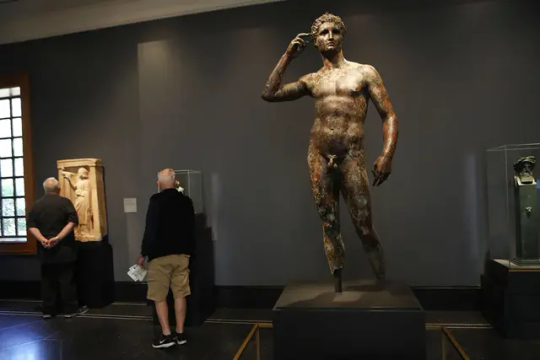
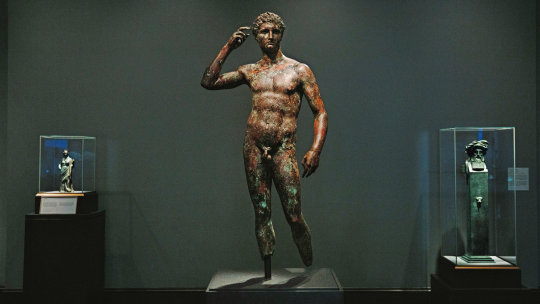
#European Court Upholds Italy's Right to Seize Greek Bronze from Getty Museum#J. Paul Getty Museum#bronze#bronze statue#bronze sculpture#getty bronze#Victorious Youth#ancient artifacts#archeology#archeolgst#history#history news#ancient history#ancient culture#ancient civilizations#ancient greece#greek history#greek art#ancient art#stolen art#looted art
103 notes
·
View notes
Photo

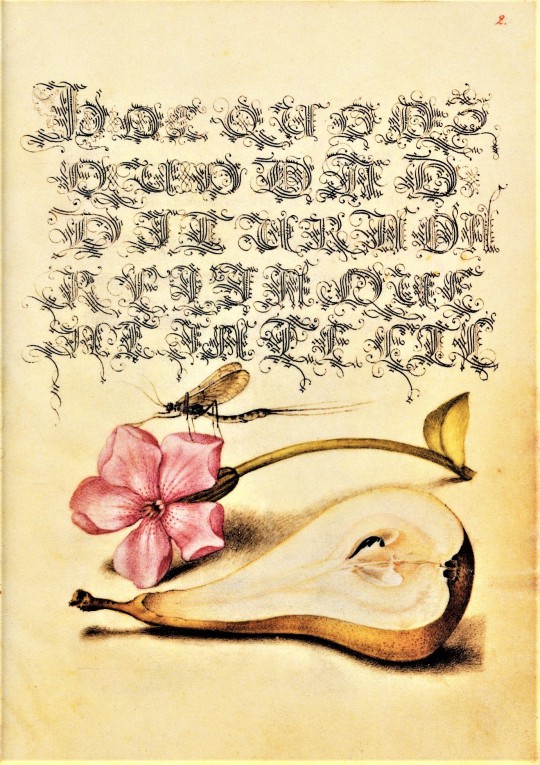
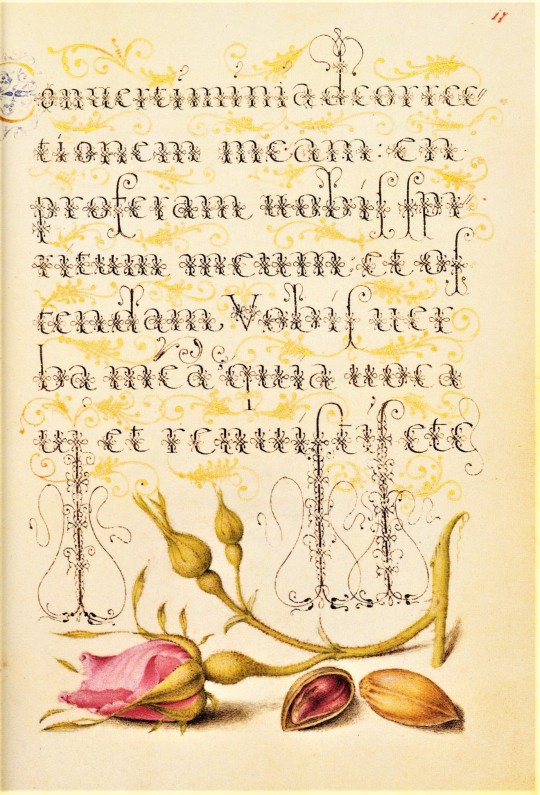




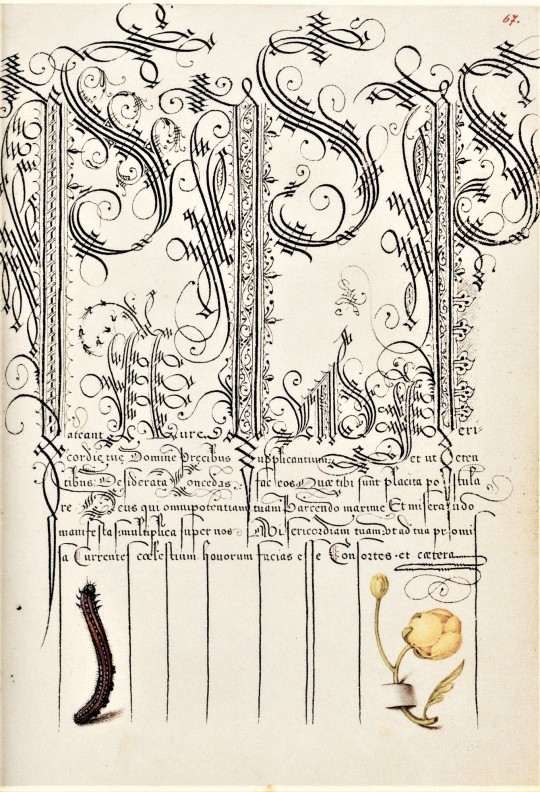

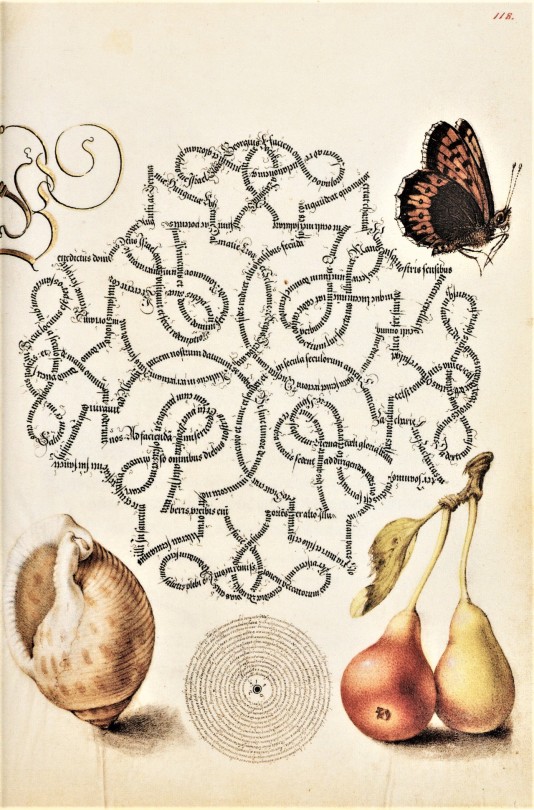
Typography Tuesday
Sometimes, things in our collection still surprise me, even after 29 years. From our fairly sizable manuscript facsimile collection, I was surprised I had never encountered this little (5 X 7 in.) reproduction of a 16th-cnetury calligraphic manuscript, Mira Calligraphiae Monumenta, the first facsimile produced from the collection at the J. Paul Getty Museum in Los Angeles, printed in Lausanne, Switzerland by Imprimeries Reunies and published by Christopher Hudson in 1992.
As the relatively new invention of printing came to dominate the production of books by the 1500s, the calligraphic inventiveness of scribes became prized for their aesthetic qualities rather than their production value.
From 1561 to 1562, Georg Bocskay, the Croatian-born court secretary to the Holy Roman Emperor Ferdinand I, created this Model Book of Calligraphy in Vienna to demonstrate his technical mastery of the immense range of writing styles known to him. About thirty years later, Emperor Rudolph II, Ferdinand's grandson, commissioned the [Flemish painter] Joris Hoefnagel to illuminate Bocskay's model book. Hoefnagel added fruit, flowers, and insects to nearly every page, composing them so as to enhance the unity and balance of the page's design. -- Getty Museum Collection webpage.
Although the two never met, the manuscript has an uncanny quality of collaboration about it.
Today we only show 11 pages from the facsimile, but we hope to present more from this highly-inventive manuscript of calligraphic virtuosity in the future.

View more Typography Tuesday posts.
-- MAX, Head, Special Collections
#Typography Tuesday#typetuesday#Typography Tuesday#Mira Calligraphiae Monumenta#Georg Bocskay#Joris Hoefnagel#calligraphy#letter forms#letters#J. Paul Getty Museum#Imprimeries Reunies#Christopher Hudson#illuminated manuscripts#facsimiles#manuscript facsimiles#Ferdinand I#Rudolph II
141 notes
·
View notes